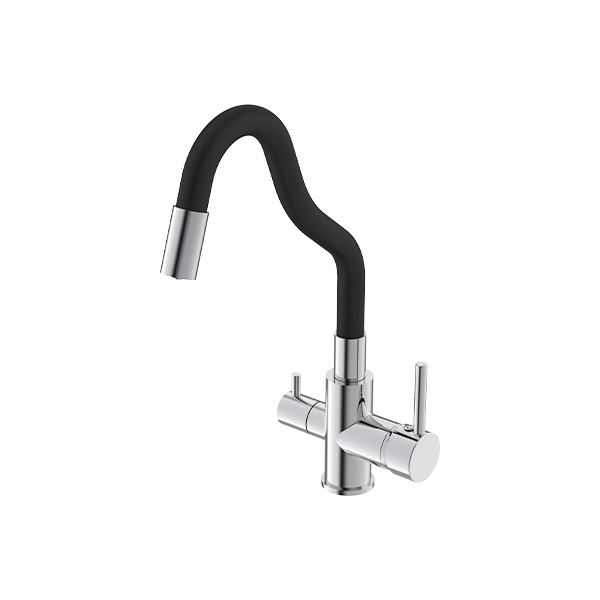The pull-out kitchen mixer tap has become a popular and practical choice for modern kitchens. Its versatility, sleek design, and functionality make it an essential tool for a wide range of kitchen tasks. Whether you're washing dishes, rinsing vegetables, or filling large pots, the pull-out kitchen mixer tap allows for greater convenience and flexibility compared to traditional taps. However, like any kitchen fixture, it requires proper handling and maintenance to ensure it functions smoothly over time.

The significant feature of a pull-out kitchen mixer tap is its extendable hose, which offers added flexibility. It allows you to move the tap's nozzle to various parts of the sink or even beyond its edge to clean larger pots, pans, and other items. While the pull-out function is incredibly useful, it's essential to use it properly to avoid damage or wear.
Gentle Pulling: When extending the hose, do so gently. Avoid yanking or pulling too hard, as excessive force can strain the hose and potentially damage the internal components. A smooth, controlled pull ensures that the hose functions efficiently without experiencing undue stress.
Retracting the Hose: After using the pull-out function, retract the hose slowly and securely. Make sure the hose is not tangled, as this could cause it to become stuck or twisted, making future use difficult.
Angle of the Hose: When using the pull-out hose, try not to stretch it to its length too frequently. The longer you extend the hose, the more stress is placed on the connectors and inner components. Using it at a reasonable angle can help prolong its lifespan.
The pull-out kitchen mixer tap usually includes a button or lever that controls water flow and temperature. Managing the water pressure correctly is crucial for both effective cleaning and the longevity of the tap.
Adjusting Water Pressure: Make sure you adjust the water pressure according to the task at hand. For tasks like rinsing vegetables or filling a pot, moderate pressure is usually sufficient. High water pressure can cause splashing, wasting water, and potentially damaging the sink or surrounding surfaces.
Temperature Control: The pull-out kitchen mixer tap typically combines both hot and cold water controls in a single lever, allowing you to adjust the temperature easily. Be sure to adjust the water temperature carefully to avoid accidents, especially when filling large containers or using the tap for an extended period. Sudden temperature changes can also strain the internal components, so a gradual adjustment is preferable.
The hose and nozzle of a pull-out kitchen mixer tap are subject to wear and tear over time, as they are regularly exposed to water pressure and movement. Regular care and maintenance of these parts are essential to maintain the tap's performance.
Cleaning the Hose: Over time, mineral deposits from hard water can accumulate inside the hose, reducing water flow. To avoid this, regularly clean the hose with a mild cleaning solution or a vinegar and water mix. This helps break down any mineral buildup and ensures the tap continues to perform well.
Inspect the Nozzle: The nozzle at the end of the pull-out hose is another area that can accumulate debris or mineral deposits. Check the nozzle periodically for any blockages or buildup, and clean it as necessary to maintain a steady flow of water. You can usually remove the nozzle for cleaning or use a soft brush to gently scrub away any buildup.
Check for Leaks: Over time, the hose and its connectors may develop leaks. Regularly inspect the hose and connectors for any signs of water leakage. If you notice leaks, try tightening the connectors. If that doesn't work, you may need to replace the rubber seals or consult a plumber for further assistance.

 English
English Español
Español русский
русский

